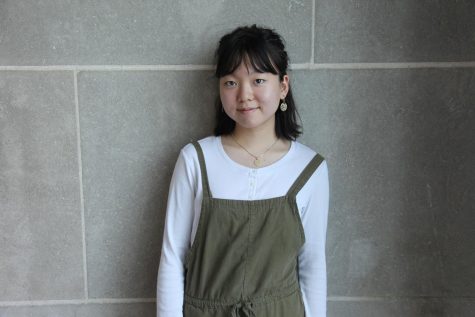What we do see
November 28, 2018
I know this isn’t a sports column, but for the first time ever, I want to talk about basketball. Specifically, I want to talk about Kevin Ware, the basketball player who went viral for his leg injury that happened during a game against Duke University in 2013. I didn’t watch the actual game…in fact, I’ve never watched a full basketball game in my entire life. I’ve also never broken a bone in my body either, so I have no idea how it actually feels.
But when I accidentally came across the trending video of Ware’s injury, the moment I heard the snap and saw the bone protruding out of his skin, I felt it as if it was my own body lying on the cold court floor, and I cringed as goosebumps shot through my arms.
I always thought it was interesting how what we see acts as a trigger for an empathetic response within our bodies where we can feel, or at least imagine, something we would otherwise be incapable of understanding. Reading the comments of Ware’s video, almost everyone who watched it had the exact same reaction as me.
The same applies to videos of bungee jumpers. Before they leap, I can feel my heart beating faster, and my hands perspiring from the nervousness I see in their facial expressions and body language that I project onto my self. I have never gone bungee jumping, and definitely never will, yet I’m able to somewhat feel how they might feel.
For the longest time, I thought that was what human connection was: being able to empathize with what my eyes can pick up in other people. I didn’t realize, though, that there are some things that I don’t see, even in the people that I thought I knew best.
In middle school, I thought of my best friend as a modern-day, 13-year-old Superwoman, and I was okay with being her trusty sidekick. We bonded over books and math homework, and despite the fact that we had so little in common, we were able to talk for hours about any topic in the world. She was the kindest and most active person I knew. Throughout our years at Madison Junior High, I remember she played for the basketball team, a travel soccer team and ran cross country. Her energy and brightness was contagious, even for me, who was on the complete opposite spectrum when it came to physical activity.
She even encouraged me to run cross country with her in sixth grade, which I considered even more impossible than bungee jumping. But she made sure it was possible for me. At every practice, we were made to run two miles behind the football field, a trail sprinkled by a couple of trees and the bareness of an empty staff parking lot.
Needless to say, I was dead last every time, with a great deal of distance between me and the runner in front of me. But to me it didn’t matter, because my friend would always make sure to run next to me. I remember she and I would whisper encouragements to each other-she did this a lot more than I did, as most of the time I would be too winded to talk-and when I gave up running and started my defeated walk, she would follow my pace and limit my pity marches.
“When we get to the next tree,” she would say, “we’ll start running again.”
When I found out she had been experiencing chronic pain for a good half of the year and was in the process of getting an official diagnosis, I didn’t see it coming at all.
I spent so much time admiring and looking up to this friend that I failed to notice how she would miss school for weeks at a time. When we sat together during lunch she would only be able to eat a yogurt and apple and would carry a large bottle of gatorade with her wherever she went.
I thought my eyes were my strongest link to people around me, but I didn’t see any of this.
My friend, who would run along with me at the very back at every practice even though she was good enough to lead the group, was going through a hard time and I didn’t even know it. Because I couldn’t see her struggle.
But I should have.
I should have picked up on the half-eaten lunches and the prolonged absences. I should have given more of an effort to see past what was just in front of me.
The things we really need to see aren’t always as obvious as a bone sticking out of a leg or people jumping off tall cliffs with a cord attached to their back. Real human connections aren’t developed based on what our eyes can pick up from others. It’s taking the time to dedicate our eyes to the details that would otherwise be left unseen. I owed my friend at least this much, and we all owe each other this effort.







